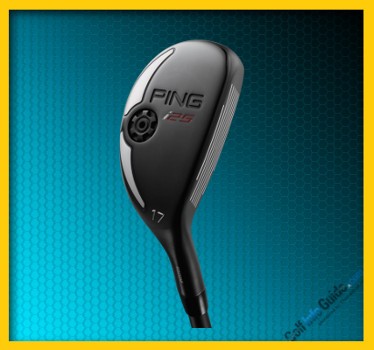Hybrids Explained |

© Ping Golf
The Ping i25 golf club is basically an evolution of the i20, it retails for $210 and it falls in the category of “better-player hybrids”; at least that’s how Ping themselves are marketing them. Now, Ping manufactures the “i-series” for quite long and they are “historically” relatively forgiving with the player; generation after generation, they tend to become better looking and a tad more forgiving, being more “player minded” if you like. All these things make the latest gen of Ping i25 hybrids the perfect choice for the lower handicap golf players who are tight on practice-time or even the mid-handicap golfers who enjoy the (compact) size/shape of the i25 hybrid and especially the “forgiveness” thingy. As for myself, I must admit that the Ping i25 are among the easiest hybrid to play with, they’re quite amazing from that point of view.
Another impressive feature of these babies appeals to our intrinsic vanity. I mean, they look awesome, with that fancy chrome finish and their compact, sleek size and shape. It’s a real pleasure to check them out as they hang in my golf bag; at least I’m a sucker for good looks. Ping did a great job with the latest generation in terms of improving the feel during your swing with the i25. The tungsten toe insert works in tandem with the vibration dampening technology found in the tuning port, creating a club that feels rock-solid at impact, but without sacrificing feedback in the process. However, the Ping i25 hybrids never feels like a cast golf club and in the same time it never feels hollow, not by a long shot, au contraire. The toe made of tungsten helps with balancing the club through impact, keeping it square and offering better feedback from the head. Bottom line, the latest Ping i25 are a perfect combo between looks and brains, being very forgiving with the player and looking awesome from any angle.






